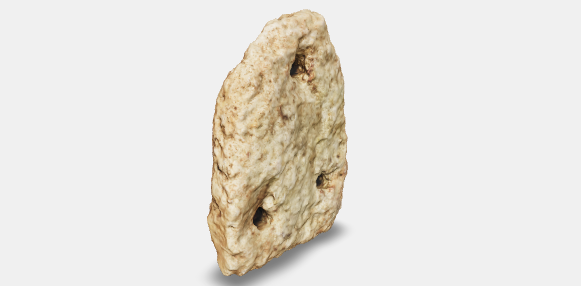Stone anchor of a trapezoidal shape, with three through-holes. The upper one was used for mooring ropes, while the two lower parallel ones had a couple of wooden bills .
The artefact presents traces of perforations caused by endolithic animals. There are numerous small circular holes over a large part of the surface that may be attributable to endolithic boring sponges (family Clionaidae), visible also thanks to the presence of dense confluent chambers in the material actively dug by the sponges.
There are also some peculiar, 8-shaped holes that correspond to the external openings of the tunnels dug in the rock by bivalve molluscs Rocellaria dubia, a species that colonises underwater calcareous substrates. As far as the epilithic encrusting colonisation is concerned, there are specimens of Polychaeta Serpulidae with their characteristic calcareous tubes and white encrusting Bryozoa colonies. Finally, there is an irregularly shaped hole resulting from the confluence of tunnels, which may be attributable to the perforating bivalve Lithophaga lithophaga (date mussel).




